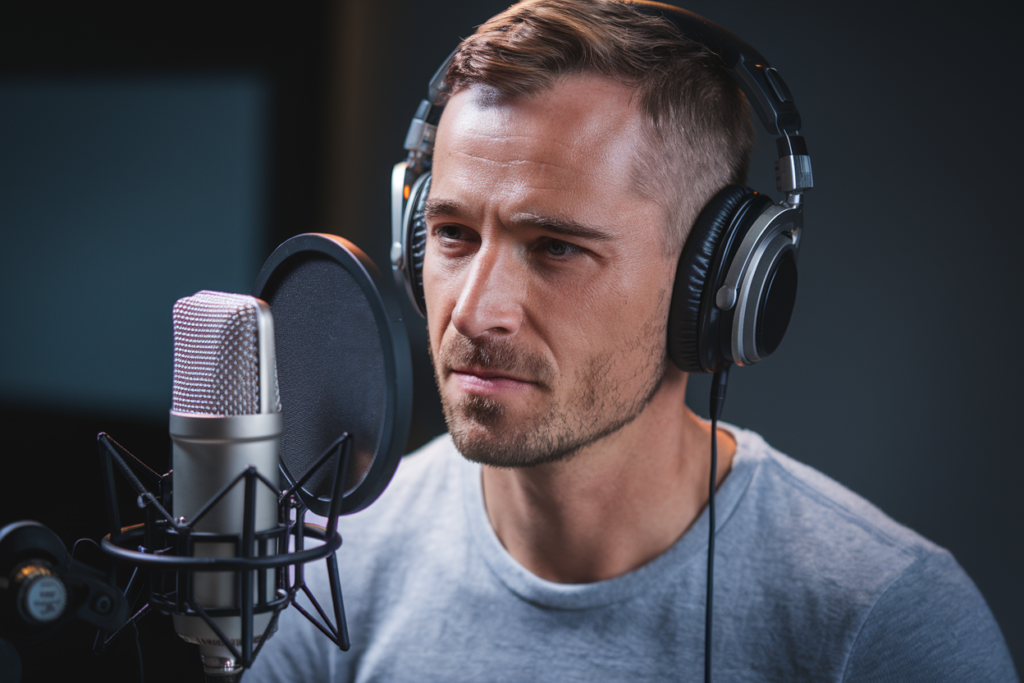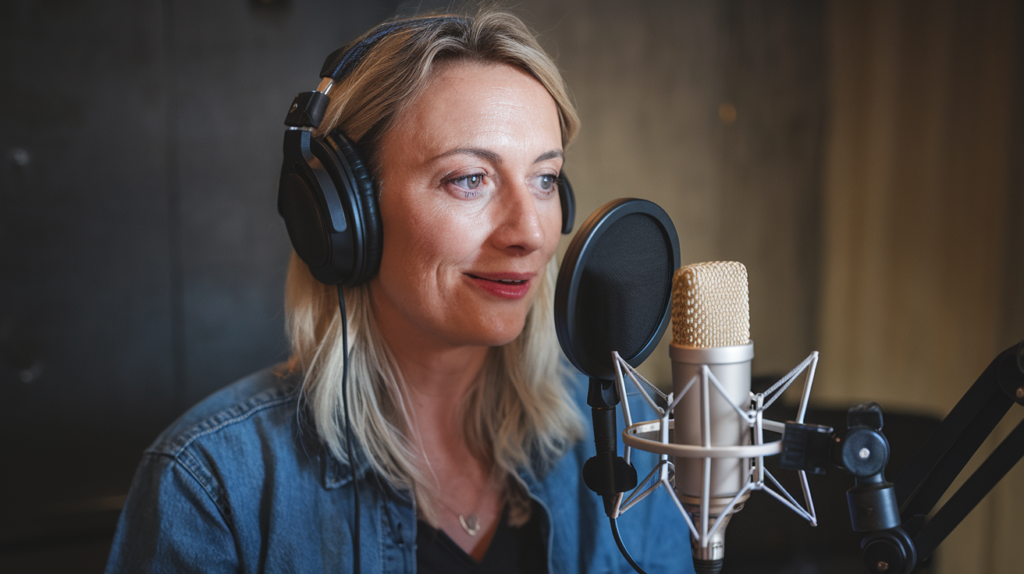Key Takeaways
- Understanding Dubbing: Video dubbing goes beyond translation; it’s about capturing the original content’s tone, emotion, and intent to resonate with a French audience.
- Voice Talent Selection: Choosing the right voice actor is crucial for authenticity. Look for talent that embodies the character’s personality while ensuring clarity and emotional delivery.
- Timing and Synchronization: Properly syncing dialogue with mouth movements enhances realism. Pay attention to timing cues in the original footage to maintain viewer engagement.
- Quality Matters: Invest in professional recording equipment and soundproof environments to ensure high audio quality, which is essential for clear communication of complex narratives.
- Cultural Relevance: Understanding cultural nuances and adapting scripts accordingly is vital for effective dubbing that resonates authentically with French audiences.
- Utilizing Technology: Leverage tools like DAWs, voiceover software, synchronization tools, and high-quality hardware to enhance your dubbing projects’ efficiency and output quality.
Ever wondered how to make your video dubbing in French for France truly stand out? It’s not just about translating words; it’s about capturing the essence of the original content while resonating with a French audience. Whether you’re a seasoned pro or just starting out, mastering the art of dubbing can elevate your project and engage viewers like never before.
Understanding Video Dubbing
Video dubbing involves replacing the original audio of a video with a new soundtrack, usually in a different language. This process requires more than just direct translation; it’s about capturing the tone, emotion, and intent behind each line. You want your French audience to connect with the content as if it were originally created for them.
Choosing the right voice talent is crucial. The voiceover artist must embody the character’s personality while ensuring clarity and nuance in delivery. A skilled voice actor can bring authenticity to your project, making dialogues feel natural and engaging. When selecting talent, consider their ability to convey emotions that align with the original performance.
Timing plays an essential role in dubbing too. Syncing dialogue with mouth movements enhances realism and keeps viewers immersed in the story. Properly timed voiceovers prevent awkward pauses or rushed speech—both can distract from the experience.
Quality matters significantly in video dubbing. Invest in professional recording equipment and soundproof environments to ensure crisp audio without background noise. Clear sound enhances viewer comprehension, especially when dealing with complex topics or emotional narratives.
Don’t underestimate post-production editing either. Editing allows you to fine-tune performances by adjusting volume levels, adding effects, or even altering pacing after recording sessions. A polished final product resonates better with audiences.
Understanding these key elements of video dubbing will elevate your projects and create deeper connections with French viewers.
Importance Of Dubbing In French For France
Dubbing in French for a French audience holds significant value, ensuring that content resonates authentically. It’s not just about translating words; it’s about delivering emotions and cultural relevance.
Cultural Nuances
Understanding cultural nuances is vital in dubbing. Each region in France has its unique expressions, slang, and humor. A voice artist must grasp these subtleties to connect with viewers effectively. Using the right idiomatic phrases can enhance relatability and make the content feel more familiar. For example, a joke that works in English might require tweaking to land well with a French audience. By capturing these cultural intricacies, you’re not only translating dialogue but also conveying the essence of the story.
Audience Considerations
Considering your audience shapes how you approach the dubbing process. Different demographics may respond differently to various tones and styles of voiceovers. Young audiences might prefer a lively, energetic voice actor, while older viewers could resonate more with a calm and authoritative tone. Knowing your target demographic allows you to select appropriate voice talent that embodies the character’s personality convincingly.
In addition, attention to local preferences can guide decisions on pacing and delivery style during recording sessions. An engaging performance enhances viewer experience as it draws them into the narrative seamlessly.
By focusing on these elements—cultural nuances and audience considerations—you elevate your video projects through effective dubbing in French for France.
Tips For Effective Video Dubbing
Effective video dubbing requires attention to detail and an understanding of the nuances of language. Here are some key tips to enhance your dubbing projects.
Selecting The Right Voice Talent
Choosing the right voice talent can make or break your video project. Look for a voice artist who not only matches the character’s personality but also resonates with your target audience. Listen to samples of their work, focusing on tone, emotion, and clarity. You want someone who can convey feelings authentically and adapt their delivery based on context. Don’t hesitate to request auditions if you’re unsure; this helps ensure you find a perfect fit for your video’s unique style.
Script Adaptation Strategies
Adapting scripts for dubbing is crucial in maintaining the original message while fitting into the new audio landscape. Start by analyzing cultural references and expressions that might not translate directly; adjust them for local relevance instead. Shortening sentences or rephrasing dialogue can help match lip movements better during syncing. Remember, it’s about creating a natural flow that feels seamless rather than forced. Prioritize conciseness without sacrificing emotional depth or intent.
Timing And Synchronization Techniques
Timing plays a vital role in effective dubbing, as it ensures sync between audio and visuals. Take note of important cues in the original footage—pauses, laughter, or dramatic moments—and plan your voiceovers accordingly. Use tools like time-stretching software to align dialogue more precisely with mouth movements if needed. Practice makes perfect; rehearse several times before final recording sessions to nail down timing naturally. Proper synchronization enhances realism, ultimately engaging viewers more effectively.
By honing these skills—selecting appropriate voice talent, adapting scripts thoughtfully, and mastering synchronization—you can elevate your video dubbing projects significantly while resonating well with French audiences.
Tools And Software For Dubbing
Selecting the right tools and software is crucial for effective video dubbing. The technology you choose impacts audio quality, synchronization, and overall project efficiency.
Recommended Software Options
- DAWs (Digital Audio Workstations): Programs like Adobe Audition and Pro Tools provide robust features for recording, editing, and mixing audio. You can layer soundtracks seamlessly while fine-tuning voiceovers to enhance clarity.
- Voiceover Recording Software: Applications such as Audacity and GarageBand offer user-friendly interfaces perfect for beginners. These platforms simplify the recording process, enabling you to capture high-quality voice talent performances without extensive technical knowledge.
- Synchronization Tools: Syncing dialogue with visuals is essential in dubbing. Software like PluralEyes automates this process, ensuring that your voice actor’s lines match perfectly with character lip movements.
- Translation and Script Adaptation Tools: Utilizing tools like SDL Trados or MemoQ aids in adapting scripts accurately while maintaining cultural relevance. These programs support various languages and ensure smooth transitions between original content and dubbed versions.
Hardware Considerations
Investing in good hardware enhances the dubbing experience significantly.
- Microphone Quality: A high-quality condenser microphone captures clearer audio nuances from your voice artist. This detail enriches the final product by showcasing emotion effectively.
- Audio Interface: An interface connects your microphone to a computer, improving audio fidelity during recordings. Look for options with low latency to monitor recordings in real-time without delay.
- Headphones: Closed-back headphones allow you to hear every detail of your recordings while minimizing external noise interference. Choose models that fit comfortably for extended sessions.
- Soundproof Environment: Creating a quiet space is vital for clear recordings. Use soundproof panels or blankets to reduce echo and outside noise disruptions—any background sounds could detract from your voiceover’s impact.
By choosing the right tools and hardware, you set the stage for successful video dubbing projects that resonate deeply with French audiences.
Conclusion
Mastering video dubbing in French opens up new avenues for engaging audiences. By focusing on cultural nuances and audience demographics, you can create content that resonates deeply with viewers. The right voice talent and effective script adaptation are key to bringing your projects to life while maintaining authenticity.
Investing in quality tools and a soundproof environment ensures your audio stands out. With practice and attention to detail, you’ll enhance your dubbing skills significantly. Embrace these insights, and watch as your video projects connect more meaningfully with the French-speaking world.
Frequently Asked Questions
What is video dubbing in French?
Video dubbing in French involves replacing the original audio of a video with a new track in French. This process aims to capture the essence of the content while ensuring it resonates with a French audience through emotional and cultural relevance.
Why is choosing the right voice talent important?
Choosing the right voice talent is crucial because they must effectively convey emotions and embody characters’ personalities. The right voice can significantly enhance viewer engagement and ensure that the dubbed content feels authentic and relatable.
How does timing affect video dubbing?
Timing is essential for syncing dialogue with mouth movements, maintaining realism in dubbed videos. Proper timing ensures that viewers perceive the dialogue as natural, enhancing their overall experience and connection to the content.
What tools are recommended for effective video dubbing?
Recommended tools include Digital Audio Workstations (DAWs) like Adobe Audition or Pro Tools for editing, along with user-friendly options like Audacity. Synchronization software such as PluralEyes helps automate dialogue matching, while translation tools aid in script adaptation.
How can cultural nuances improve dubbing quality?
Understanding cultural nuances enhances relatability by incorporating regional expressions and humor into scripts. This attention to detail allows creators to connect more deeply with their target audience, making the content feel genuine and engaging.
What are some practical tips for successful video dubbing?
Key tips include selecting appropriate voice talent, adapting scripts thoughtfully to fit cultural references, and mastering synchronization techniques through rehearsal and tools. These practices help create an authentic viewing experience for French audiences.
Why is soundproofing important in recording?
Soundproofing is vital because background noise can detract from audio clarity during recordings. A soundproof environment ensures high-quality audio capture, allowing voiceovers to have maximum impact on viewers without distractions from unwanted sounds.
How does post-production editing contribute to dubbing projects?
Post-production editing fine-tunes performances by adjusting levels, removing mistakes, and enhancing overall audio quality. This stage helps ensure that final dubbed products meet professional standards and resonate well with audiences.







